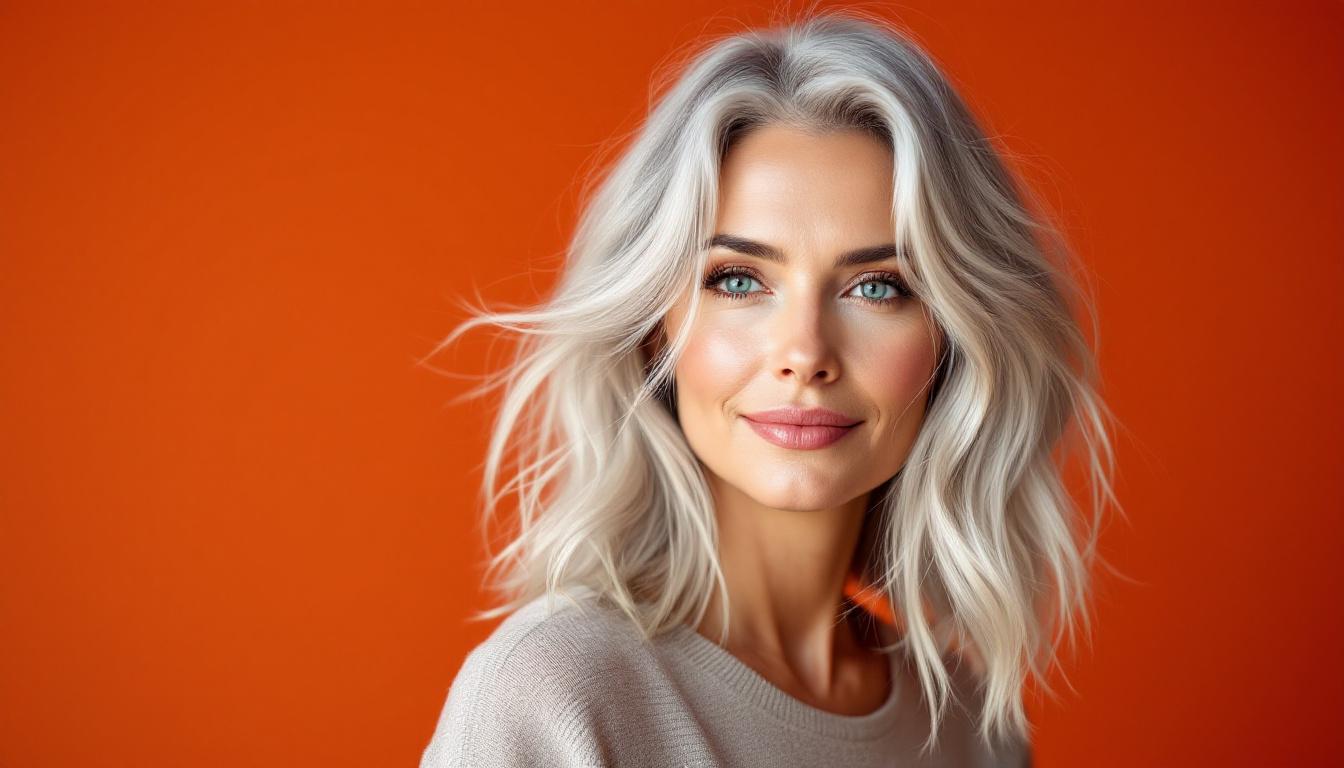As summer transitions into early fall, many mature women discover that their once-reliable hair color has suddenly taken an unwelcome turn. Those beautiful silver strands now have a yellowish tint, or that elegant blonde has morphed into a brassy orange. The August heat of 2025 has been particularly challenging for mature hair, making color correction more essential than ever before.
Why mature hair develops unwanted tones
When hair ages, it becomes more porous and reactive to environmental factors. “Mature hair lacks the natural oils and melanin that once protected it,” explains colorist Elaine Thompson from New York’s Silver Lining Salon. “This makes it particularly vulnerable to developing brassy or yellow tones, especially during these late summer months when UV exposure is still significant.”
Even women who’ve embraced their natural gray find themselves battling yellowish tints. Those who color their hair face similar challenges when the pigment breaks down unevenly, revealing those dreaded warm undertones beneath.
Identifying problematic tones in mature hair
Before attempting any correction, it’s crucial to identify what’s gone wrong. Common tone issues include:
- Yellowish or brassy undertones in gray or silver hair
- Orange or copper tones in blonde hair
- Purple or blue overtoning that looks unnatural
- Ashy tones that make the complexion appear washed out
Professional correction techniques for aging hair
When tones go seriously wrong, professional intervention may be necessary. Color melting has become a popular technique among stylists working with mature clients. “This method creates a seamless blend between the roots and ends, making corrections look natural rather than obvious,” notes colorist James Reynolds.
For women seeking a lighter, cooler style for fall, consider a wispy bob that removes significant hair weight while providing a fresh canvas for color correction.
At-home solutions for minor tone problems
For less severe issues, at-home remedies can work wonders. Purple shampoos are excellent for neutralizing yellow tones in gray or blonde hair, while blue shampoos combat orange or brassy tints. These products work like color theory in practice – purple neutralizes yellow, and blue counteracts orange.
Women with fine, white hair experiencing tone issues might benefit from a vintage razor crop that adds volume while making color correction more manageable on shorter strands.
Nurturing mature hair through the correction process
Color correction can be taxing on mature hair, which is already more fragile and prone to damage. “Think of mature hair as vintage silk – it requires gentle handling and special care to maintain its beauty,” says Thompson.
Many women notice increased hair loss during correction processes. If you’re experiencing this, consider whether there might be underlying causes unrelated to hormones that should be addressed.
Nourishing treatments that enhance color correction
Deep conditioning treatments are non-negotiable during and after color correction. For exceptional results, try an avocado hair mask that can revitalize mature locks and help maintain your corrected color.
Incorporate these treatments weekly to keep your newly corrected color looking vibrant:
- Bond-building treatments to strengthen hair structure
- Color-depositing masks to maintain tone between salon visits
- Heat-free styling to prevent further damage to corrected hair
Hairstyles that complement corrected color
Once your color is beautifully corrected, consider a hairstyle that adds volume and takes years off your appearance. The right cut can enhance your new color and create dimension that flatters mature features.
Remember that color correction isn’t just about fixing a problem—it’s about revealing the most radiant version of your mature beauty. With the right approach, those unwanted tones can transform into your most flattering look yet as we move into the cooler months ahead.
